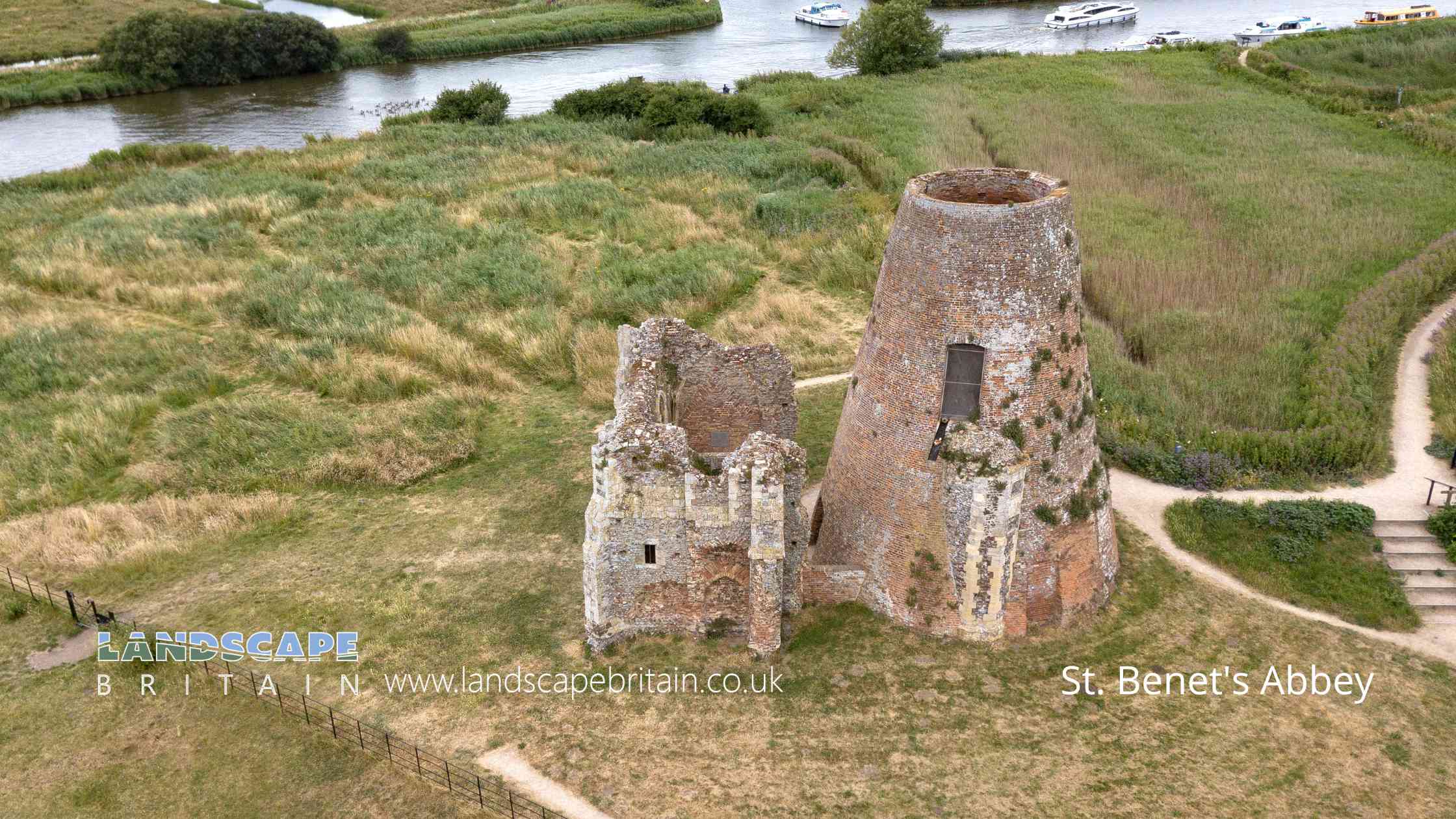
St Benet's Abbey by clubfoto
St Benet's Abbey
St. Benet’s Abbey in Norfolk: A Historical Overview
1. Monasticism in the British Isles: From Augustine’s mission in AD 597 until Henry VIII’s reign, monasticism was a vital part of both religious and secular life in the British Isles. Over 700 monasteries, designed to house religious communities such as monks, canons, and lay-brothers, were established. These communities varied in size and were affiliated with different religious orders, each with its unique philosophy. Monasteries were not only centres of worship, learning, and charity but also wielded significant wealth and political influence due to vast landholdings. They were spread across England, with some in urban centres and others in remote locations. Many played central roles in extensive networks that included parish churches, almshouses, hospitals, estates, and villages.
2. Origin and Development of St. Benet’s Abbey: Around 800 AD, Suneman led a group of Saxon monks to erect a church dedicated to St Benedict at the confluence of the Rivers Bure and Thurne. Though the Danes destroyed this early structure in 870, Wulfric reestablished the community and rebuilt the chapel by around 960. King Cnut took interest in the community due to a purported miracle, founding the Benedictine Abbey in 1019. The abbey was richly endowed and had dependencies like the Priory of St Michael at Rumburgh and the Hospital of St James at Horning. At its height, the abbey housed 22 to 26 monks and was part of a vast network of 163 Benedictine houses in England, with a significant presence in Norfolk.
3. Architectural Evolution: The architectural sequence of St. Benet’s Abbey remains somewhat elusive. Various abbots over the years contributed to its construction and expansion. The first abbot, Elsinus, initiated the conversion of a mud church to stone. Successive abbots added structures like the west tower, chapterhouse, dorter, frater, cloister, and other essential monastic buildings. Later additions in the mid-15th century by Sir John Fastolf included an aisle and a Lady Chapel. The church’s mid-16th-century plan suggests its main features, with remnants allowing for some reconstruction. Notably, the guest house’s great hall was a contribution by Abbot Reynold.
4. Decline and Legacy: Unique among English religious establishments, St. Benet’s Abbey was never dissolved under Henry VIII. However, by the 17th century, most of its structures had fallen into disrepair, with only a few buildings like a house, barn, stable, and a mill remaining. The gatehouse, one of the better-preserved structures, had a windmill added in the 18th century. An inn named The Chequers once stood nearby but was demolished by 1907.
5. Archaeological and Conservation Efforts: The site underwent an analytical earthwork survey in 1994, primarily due to concerns about river erosion. A geophysical survey in 1996 aimed to reveal buried structures, but dry conditions limited its effectiveness. Repair work on the gatehouse and windmill took place in 2012, and recent conservation efforts have exposed and documented parts of the precinct wall.
6. Site Description: St. Benet’s Abbey, located 12km north-east of Norwich, sprawls over an area known as Cow Holm. The church stands elevated, with the precinct taking a D-shape, bordered by a ditch and the River Bure. The site boasts various principal elements, including the C14 gatehouse with an integrated C18 windmill, the church’s ruin, and buried remains of claustral structures from the C12 to C14 period. The precinct houses remnants of the Abbot’s Hall, bakery, barn, brewery, and stables. Detailed architectural features, earthworks, and water bodies add layers of history to this once grand establishment.
In summary, St. Benet’s Abbey, with its rich history and architectural legacy, stands as a testament to the monastic traditions and religious fervour that once flourished in the British Isles.
Created: 21 August 2023 Edited: 29 November 2023
St Benet's Abbey
St Benet's Abbey LiDAR Map
Contains public sector information licensed under the Open Government Licence v3.0
Local History around St Benet's Abbey
There are some historic monuments around including:
Site of St Mary's Priory, Wey BridgeSt James's HospitalPotter Heigham BridgeRAF Neatishead Type 84 radar modulator building and four radar plinthsSt Benet's Abbey.



